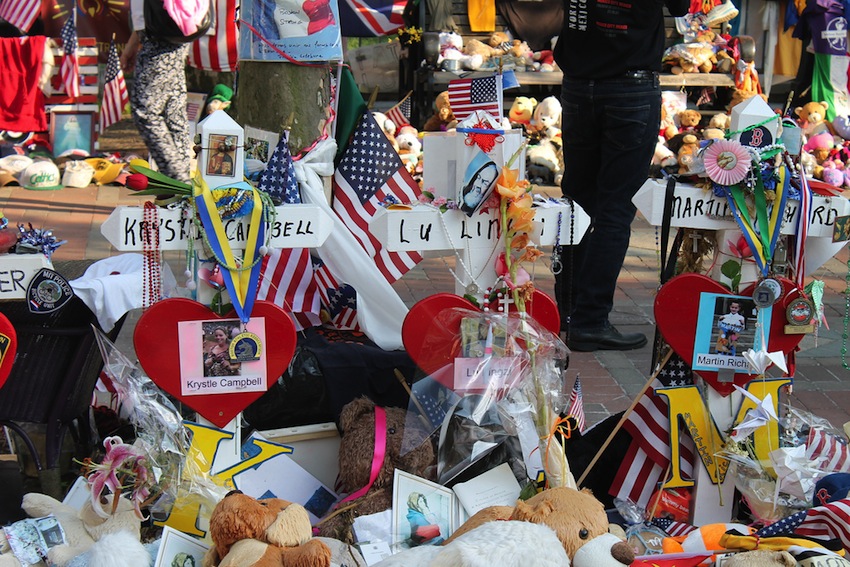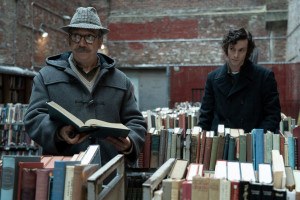Our Marathon: Digital Archive At Northeastern Opens on Six-Month Anniversary of Boston Bombing

Boston Marathon memorial Photo Uploaded by TTNHDProductions on Flickr
Some of the signs, letters, stuffed animals, and array of hats and shoes that once took over Copley Square following the Boston Marathon attack on April 15, will be on display during an exhibit to honor the victims on the six month anniversary of the bombing, and will supplement a digital archive put together by Northeastern University researchers.
“Our Marathon,” a crowd-sourced, digital archive of the Boston Marathon bombings, opens on October 15, at Northeastern University’s Snell Library, and will feature items placed at the scene of the horrific attack, which were later catalogued and placed in the City of Boston Archives. The exhibit is an extension of a digital project launched by the school’s NULab for Texts, Maps, and Networks, a new center for Digital Humanities and Computational Social Science, which has dedicated time to compiling thousands of digital memories stemming from the April 15 tragedy.
While the display is a one-day event, the group has been collecting information for the project since May, which is available online. It has since become the largest collection of digital references of its kind.
The event, which runs from 1-8 p.m., is free and open to the public, and will give city residents an opportunity to reflect on the day of the marathon, six months after the bombing. Attendees can submit—in writing, or through recording—their own stories about the April 15 event. “Our Marathon” is a community project hosted by Northeastern University, and will serve as a long-term memorial for the bombings. Researchers hope it will become a go-to collection of digital content related to the attack and the aftermath in the city.
Already, more than 3,000 items have been submitted to the archives, including first- accounts from victims of the bombings, cards, and well-wishes given to patients at Boston Medical Center. The archives also include photos from The One Run, and graphics and Internet memes created by people from across the country. The overall project is a result of research by university faculty and students.
Those who can’t attend the opening of the showcase can submit their own stories online, in the form of small text messages, individual photos, short stories, personalized videos, or audio recordings.
“[This exhibit] will allow the public to explore not only what happened during the event, but also how the event was experienced by Bostonians, visitors to the city, and those many members of the ‘Boston diaspora,’ who were far away but deeply engaged in the unfolding events,” according to the “Our Boston” website. “The archive will [preserve] these records for students and researchers, providing future historians with invaluable, local windows into an important national event… this is a place for those images, emotions, and experiences to be shared and for us to understand the event in its broad, community-wide dimensions.”
Items placed in Copley Square in the days and months following the attack were moved to the city’s archives in an effort to preserve them—and possibly use many of them—for a future memorial site. A remembrance committee was formed to take on the task of setting up a more permanent site paying homage to those injured and killed in the bombing.
For more information about the exhibit, visit the event’s Facebook page.


